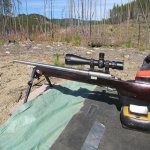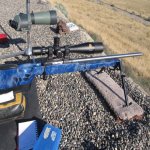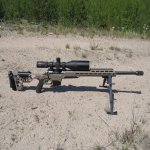The problem with virgin Lapua brass is that the neck tension is fairly tight, and sometimes the necks are dinged a bit from rough handling during transport.
I find my best groups are after 2-3 firings with careful brass prep which the OP is doing - body die to set the shoulder back consistently, Lee Collet die to set neck tension, and trim/chamfer/deburr to consistent length (with a Girad trimmer in my case).
My brass was damaged after it’s first firing, i will explain.
I used to wet tumble, which had it’s lots of problems.
My neck sizer stuck in more than a few necks, elongating necks.
My neck turner pilot would get stuck inside, making uneven neck thickness.
Since then i am dry tumbling, which has corrected all my problems.
But am thinking that firing brass 3x times since initial mistakes, may not have buffed my beginning mistakes.
Right now everything rocks, and dry tumbling saved the day.
Here is my procedure, everything is done every firing.
Dry tumble
Decap
Primer pocket uniform/clean
Anneal
Body size redding 2 thou bump
Neck size lee collet
Neck turn forster at 12.5 thou
Trim/chamfer/debur 3in1 forster
Prime with CCI BR2
Powder with AD FX120 with auto trickler and varget
Seat bullet with forster benchrest micro die on a separate press next to powder
This setup literally has zero or very little run out.
Since the brass was tortured in its begginings it’s having an effect on my mental game.















































































